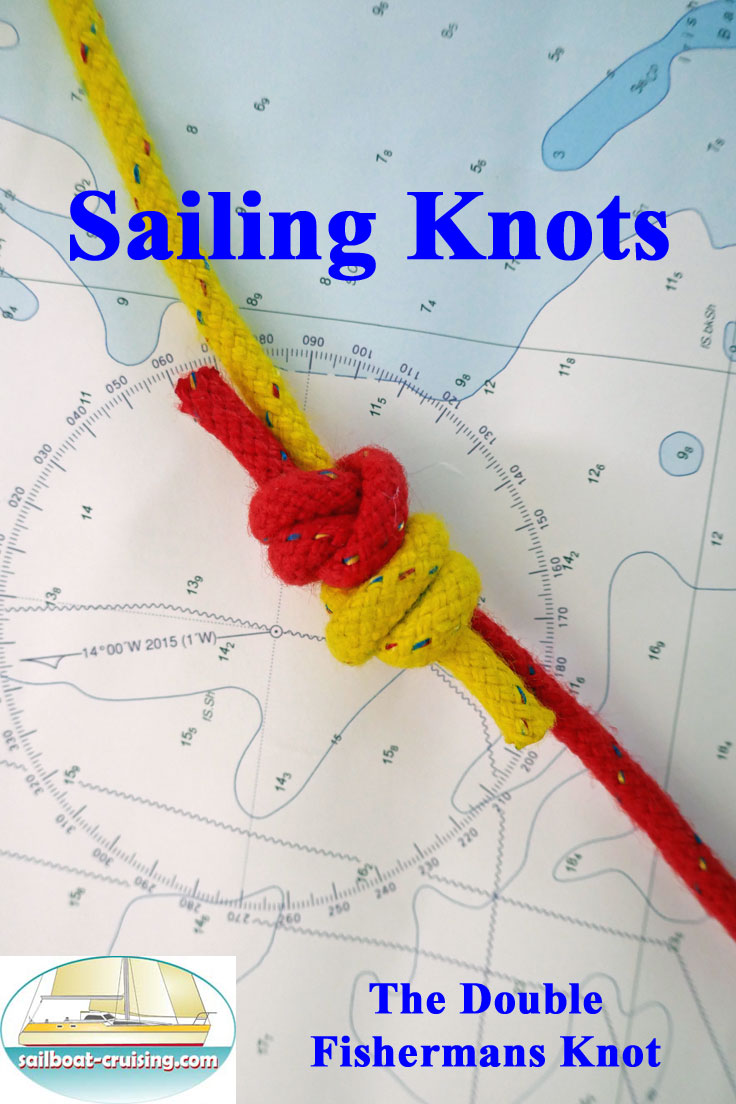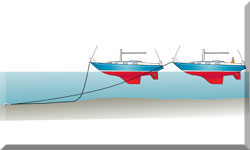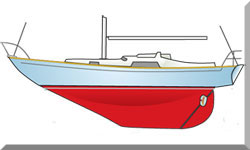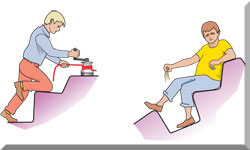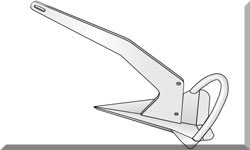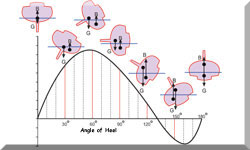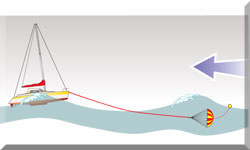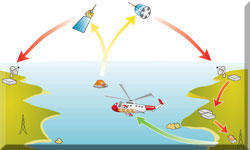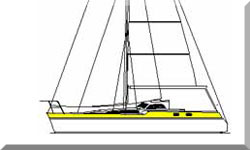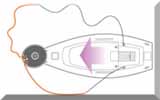- Home
- Knots, Bends & Hitches
- Double Fishermans Knot
The Double Fishermans Knot
How to Tie It & When to Use It
The Double Fishermans Knot is used for tying together two lines of the same diameter.
Imagine for example you need to anchor stern-to the beach and need to take a long line to an object ashore. Your mooring lines are not long enough for the job and need to be joined together. The Double Fishermans Knot would be the knot to use to make this connection.
The two double overhand stopper knots come up against each other when the standing parts are pulled apart making this knot - correctly speaking it's a bend, not a knot - much stronger and more secure than a reef knot.
Although it can be formed more quickly and easily with single overhand knots, it won't be anywhere near as strong as the version shown here.
How to Tie the Double Fishermans Knot

Stage 1
Lay two lines together and take the right-hand (yellow) one over the left-hand (red) one;

Stage 2
Pass working end of the yellow line under its own standing part and the red line's working end working from left to right;

Stage 3
Do the same again forming two loops around the red line;

Stage 4
Now tuck the working end of the yellow line back through the two yellow loops, and tighten the knot (it's a double overhand knot) around the red line;

Stage 5
Transfer your attention to the red line and repeat the process to form two red loops.

Stage 6
Tuck the working end of the red line through the two red loops from left to right.

Stage 7
Cinch the red double overhand knot up tight.

Stage 8
Pull the two standing parts until the two knots are jammed together - and that's it, you've tied a double fishermans knot.
People have also asked...
What is a Double Fishermans knot used for?
What is a Double Fishermans knot used for?
The double fisherman's knot, also known as a grapevine knot, is primarily used to join two ropes together. It is known for its strength and reliability, making it a popular choice for various applications, especially in climbing and rescue operations. Here are some specific uses:
- Climbing:To tie two climbing ropes together for rappelling or ascending.To create Prusik loops used in self-rescue techniques and climbing systems.
- Fishing:To join two fishing lines or to attach the fishing line to the leader.To secure the fishing line to terminal tackle.
- Search and Rescue:To connect ropes when longer lengths are needed.To create strong, secure loops for hauling or lifting.
- General Use:In any scenario where a strong and reliable connection between two ropes is required.
This knot is valued for its ability to maintain strength under tension and for being relatively easy to untie, even after bearing a heavy load.
Are there any other versions of the of the double fisherman's knot?
Are there any other versions of the of the double fisherman's knot?
Yes, there are a few variations of the double fisherman's knot, each tailored for specific uses and offering different levels of security. Here are a couple of notable ones:
1. Triple Fisherman's Knot:
- Structure: Adds an additional wrap to each of the overhand knots, making it more secure.
- Uses: Often used in climbing for critical applications where maximum security is needed, such as tying together abseil ropes or making a loop for a Prusik hitch.
2. Scaffold Knot (also known as Poacher's Knot):
- Structure: Similar to the double fisherman's knot but typically used to form a loop rather than joining two separate ropes.
- Uses: Commonly used in fishing to attach lines to hooks or rings and in rescue operations to create strong loops.
3. Sliding Fisherman's Knot:
- Structure: A variant where one of the overhand knots is tied loosely, allowing it to slide along the standing part of the rope.
- Uses: Useful for creating adjustable loops that can be tightened or loosened as needed, often used in setting up tarps or shelters.
4. The Langford double knot: A more complex and secure version of the double fisherman's knot. It's often used in situations where a stronger, more secure knot is needed, such as in climbing or rescue operations. The Langford double knot is essentially a double fisherman's knot with an additional twist, which increases its strength and security.
These variations offer additional options depending on the specific requirements of the task at hand. They are all based on the fundamental principle of the fisherman's knot but provide different levels of security and functionality.
What is the strongest knot to tie two ropes together?
What is the strongest knot to tie two ropes together?
The double fisherman's knot, the triple fisherman's knot, and the alpine butterfly bend are among the strongest knots for tying two ropes together. Here's a brief overview of each:
1. Double Fisherman's Knot:
- Strength: Known for its security and strength, especially under load.
- Uses: Common in climbing and rescue operations for joining ropes.
2. Triple Fisherman's Knot:
- Strength: Even more secure than the double fisherman's knot, with an additional wrap.
- Uses: Used in critical climbing applications where maximum security is essential.
Recent Articles
-
Which Type of Boat Fridge Is The Most Efficient?
Apr 24, 25 05:06 AM
The top opening boat fridge is reputed to be more efficient than the front opening type, but that may not be the case - and here, amongst other boat refrigeration considerations, is why -
Multihull Autopilot Selection is Not Straightforward
Apr 19, 25 01:25 PM
Whether its for a catamaran or a trimaran, tiller or wheel steered, a multi hull autopilot must be endowed with specific performance characteristics... -
Wheel-Steering Autopilots: Your Questions Answered...
Apr 18, 25 03:45 PM
Whatever your question, you should find the answer here
